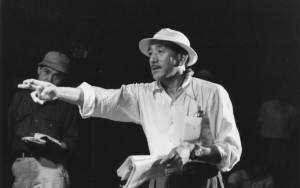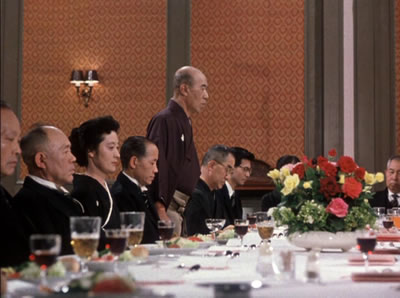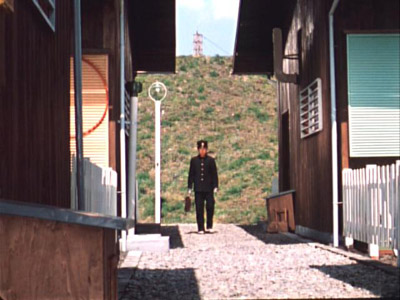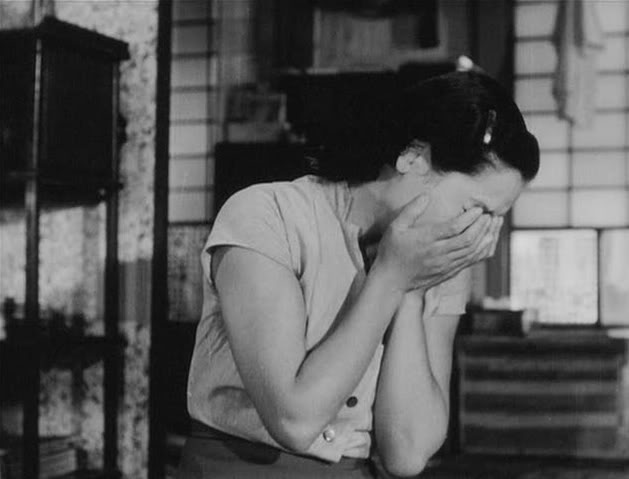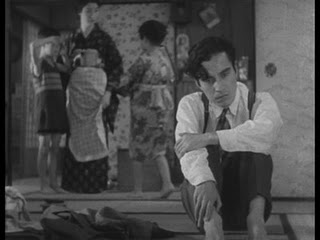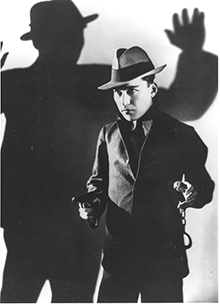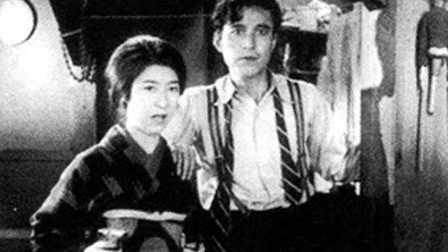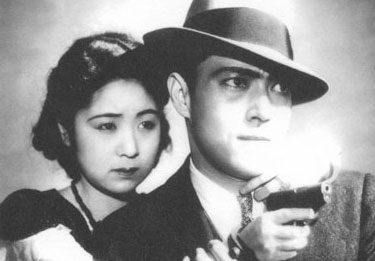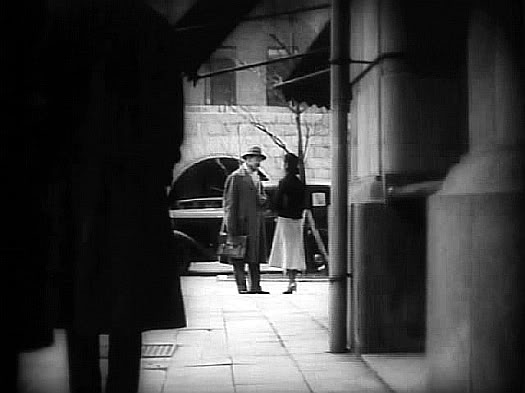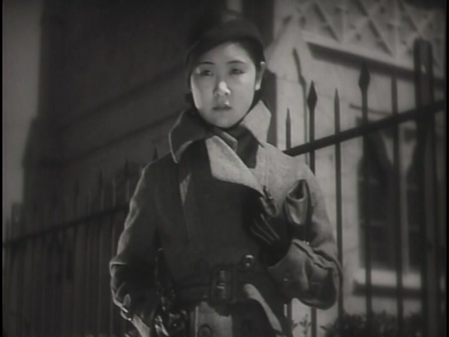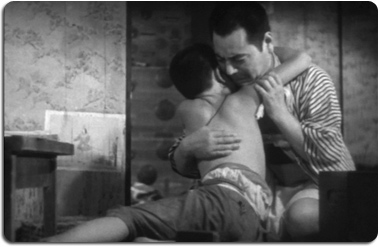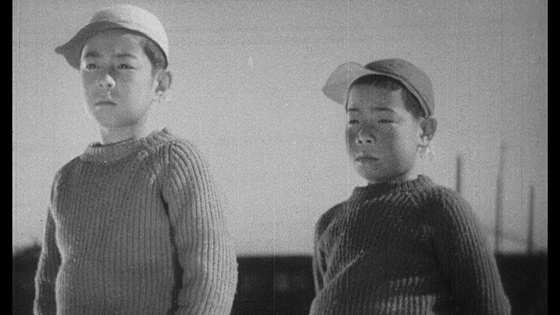From the Chicago Reader (January 14, 2005). — J.R.
Yasujiro Ozu Retrospective
at the Gene Siskel Film Center
It’s no longer controversial to assert that Yasujiro Ozu (1903-’63) is one of the greatest filmmakers ever — certainly one of the top dozen and possibly the greatest of those who’ve focused on family life. But getting a fix on his work remains far from easy. Only 34 of his 50-odd films appear to have survived, and two features exist only in fragments. The Gene Siskel Film Center’s retrospective, which started last week and runs through March 3, includes 25 features, and some of his other works, including a seldom-shown documentary short, might be screened later if the features draw big enough crowds.
One of the films showing this week, Tokyo Story (1953) — the first Ozu film to have been seen widely in the West, and still the best known and most highly regarded — is a good starting point for viewers unfamiliar with his work. (So are Equinox Flower and Good Morning, two gorgeous color films from the late 50s, showing later this month.) But it has led many critics to make unfair broad generalizations about Ozu’s style and content, to claim that his films are slow and conservative, his technique minimalist.
These labels don’t apply even remotely to another of his greatest films, the silent Tokyo Chorus (1931), also showing this week. Each of the 9 silent films in the retrospective is being screened only once, each of the 16 sound features twice. This is understandable given the bias against silent pictures and the cost of hiring a pianist (though the accompaniments of David Drazin alone are worth the price of admission). But it reinforces a skewed perception of Ozu. His first 35 films were silent, and his last 20 were talkies. Many of the silent works are now lost, but the ones we still have display a stylistic range and freedom that are almost absent from the talkies. The silents were often assignments, yet Ozu made them his own. The “James Maki” credited with many of the stories (and those of Ozu’s first two sound features) is actually Ozu writing under a pen name, and the actors and crew members are many of the ones he would use throughout his career. Made over just nine years, these 35 works display a remarkable diversity and authority; the only comparable stretch in a great director’s career that comes to mind is Jean-Luc Godard’s work in the 60s.
On my first trip to Japan six years ago I appeared on a panel discussing Ozu and learned that all his silent films were available on video. He’d just come back into fashion in Japan, yet none of the many young film buffs and Ozu fans I spoke with in Tokyo had seen even one of his silents. Many critics seem to have concluded that Ozu spent his first nine years as a director looking for a style and a subject and that the essence of his greatness lies in his later refinement of such techniques as a low camera angle and a motionless camera. But to understand his work one needs to consider some of the skills he discarded, skills apparent in such exciting if eccentric American-style thrillers as That Night’s Wife and Dragnet Girl and in the more overt and rebellious social criticism of such early features as Tokyo Chorus, I Was Born, But… (my favorite of his films, showing next week), Passing Fancy, and An Inn in Tokyo (regrettably missing from the retrospective).
Ozu’s films tend to be physical and physically expressive, and I would argue that in this respect his silent pictures are superior to his talkies. It’s one reason he kept directing silents through 1935. Japanese films were late to shift to sound because the benshis, the live commentators whose creative embroideries were sometimes more popular than the stars’ acting, had so much power. Ozu was even more reluctant than his colleagues to shift to sound, though his first talkie, the 1936 The Only Son, was a masterpiece. (Charlie Chaplin finally gave his tramp a voice that same year, in Modern Times.)
Ozu is commonly regarded as “the most Japanese of Japanese directors” — the usual reason given for why his films were slower to reach the West than those of Akira Kurosawa and Kenji Mizoguchi. (When I saw some Ozu films in Paris in 1972, no Ozu film had ever been distributed in France or written about in Cahiers du Cinéma or Positif, the two leading monthly film magazines.) Yet the most critically illuminating study of his work I know, by Shigehiko Hasumi, provocatively maintains that calling Ozu “very Japanese” is “a huge mistake…based on a lack of understanding of his works.” (I know this book only through its French translation, but its final chapter, which includes this argument, is available in English in a collection edited by David Desser, Ozu’s Tokyo Story.)
Ozu has been misperceived in many ways. Even a film lover as knowledgeable as the late Susan Sontag — who had a passion for Japanese cinema and once compared Ozu to Jane Austen — could write in 1995 that “the great Japanese directors (Ozu, Mizoguchi, Kurosawa, Naruse, Oshima, Imamura) have tended not to be cinephiles.” This is clearly wrong in Ozu’s case. According to David Bordwell’s 1988 Ozu and the Poetics of Cinema, by far the most comprehensive book about Ozu in English, he “was almost certainly the most cinephiliac major director before the New Wave.” Ozu’s journals — which I also know only from the French edition, an 800-page monolith titled Carnets 1933-1963, published the year after Sontag’s essay — contain a record of the numerous films he saw on a regular basis, many of them Hollywood classics. (His all-time favorite was Citizen Kane.) His silent films often show the influence of his favorite directors, including Fritz Lang (That Night’s Wife), Josef von Sternberg (That Night’s Wife, Dragnet Girl), and King Vidor (Tokyo Chorus, Passing Fancy).
Another potential obstacle to grasping Ozu’s work is the relevance of Zen Buddhism to his films, a question raised mainly by the only thing written on his gravestone: the Japanese character “mu,” which means “nothing.” Ozu disparaged the tendency of foreign critics to overemphasize such matters when he said, “They don’t understand — that’s why they say it is Zen or something like that.” I wouldn’t want to claim that his religious beliefs are irrelevant to his work, especially given his profound acceptance of and affection for people as they are. But critics have often concentrated on what’s absent or implied in Ozu’s films instead of what’s visible and audible, then produced a fair amount of mumbo jumbo about it — as they have with Robert Bresson, Carl Dreyer, and even a certifiable mystic such as Andrei Tarkovsky. As Hasumi points out, despite the seasonal references in the confusingly similar titles of many of Ozu’s later films — Late Spring, Early Summer, Early Spring, Equinox Flower, Late Autumn, The End of Summer, An Autumn Afternoon — the films themselves ignore seasonal changes and lack a seasonal context. Hasumi writes, in what I think is the most important sentence in his book, “Ozu’s talent lies in choosing an image that can function poetically at a particular moment by being assimilated into the film, not by affixing to the film the image of an object that is considered poetic in a domain outside the film.”
This can be readily seen in key moments of Tokyo Chorus. The story concerns a young family man who loses his job at an insurance company when he protests the unfair firing of an older employee, has to sell most of his wife’s clothes to pay for the care of their sick infant, and ultimately winds up working for a former teacher who runs a cheap restaurant. (Like Passing Fancy and An Inn in Tokyo, it’s very much a Depression film, and it conveys more of the flavor of what Americans were going through at the time than anything in The Aviator.) On his way back from job hunting the father finds his son fishing, and the son, after borrowing his father’s hat to land a fish, tells him his youngest child is ill. They both rush home, and for a few seconds Ozu focuses on the forgotten fish flopping helplessly on the ground — a startling image that depends entirely on its context for its poetry. A similarly uncanny moment occurs much later when the father remarks to his wife, “I feel I’m getting old. I’ve lost my energy,” and his words are sandwiched between two shots of his kids’ clothes hanging on a line outside.
Many similar visual asides in That Night’s Wife (1930) involve expressive hands, especially the hero’s. One close-up of him nervously drumming two of his fingers on the glass pane of a phone booth is especially memorable. Most of this thriller transpires over one night in a small, cluttered apartment, where the hero, who’s just robbed his office to get money for his ailing child, and his wife hold a gun on a policeman, until they fall asleep and he turns a gun on them. Ozu’s focus on their hands clearly serves the plot and the suspense, but he also uses it as a poetic motif.
The power of such images is partly rhythmic, enhanced by the cutting, and Ozu’s mastery of this approach is apparent throughout his career. When the policeman in That Night’s Wife turns up at the door of the hero’s apartment and starts knocking, a sublime frisson is created by a cut from a rapid track up to the door from inside to a rapid track away from the back of the policeman outside. Dragnet Girl (1933) opens with a dazzling montage that introduces us indirectly to the title heroine, a typist and a gangster’s moll (played by the great Kinuyo Tanaka, an Ozu regular who became Kenji Mizoguchi’s lead actress in most of his 40s and 50s masterpieces and the first Japanese woman to direct films). The first 11 shots are an overhead view of city pedestrians; the blinds on an open window; two adjacent grandfather clocks that say 3:40 on an office wall alongside the slots for workers’ cards; the same workers’ cards alongside hats hung on pegs; an electric clock on another wall that says 3:32; the hats, one of which suddenly falls of its own accord and lands on the floor in a separate shot; a tracking shot past the backs of four women typing at adjacent desks; a long track past many more hats on pegs; a track past the same four women that stops at a typewriter on a desk, after which a fifth typist (Tanaka) enters the frame, seen first from the back then, after a cut, from the front as she stands and reads a letter.
Ozu is characteristically playful with the formal beauty of this theme and variations and relatively indifferent to conventional narrative continuity — implied in the cuts between the second and third shots and blatant in the movement from 3:40 PM in the third shot to 3:32 PM in the fifth. Also typical is his fascination with repeating patterns and sameness — clocks, hats, typewriters, tracking shots — which suggest the conformity and predictability of Japanese society. In I Was Born, But... (1932) the camera tracks to the right past boys at school marching in military formation, then there’s a cut to a track in the same direction past adult workers at a row of desks, each yawning as the camera passes. When one worker fails to yawn, the camera stops and tracks back to him, waiting for his yawn before resuming its path.
Repetitions are played for laughs on other occasions as well. The prelude to the hero getting fired in Tokyo Chorus is a hilariously staged grudge match between him and his boss in which they use identical aggressive gestures. Shortly before that the hero and his office mates are seen collecting their bonus checks, and a wonderful extended gag shows each of them retreating to the men’s room or the hallway so the others can’t see what they got or how they react to the amount. Even more physical is the inspired slapstick sequence that opens Passing Fancy (1933), set at a public music and storytelling performance, where a stray purse is surreptitiously picked up, investigated, and discarded by a succession of people in the audience, who toss it around like a beanbag — a string of repetitions that overlaps with a series of frenetic dances performed by many of the same people when they’re bitten by fleas.
It’s been years since I saw King Vidor’s The Champ (1931), the most obvious source for Passing Fancy. As great as that film and its beautifully inflected father-son relationship are, Wallace Beery as the slow-witted but lovable lead doesn’t achieve the complex characterization Takeshi Sakamoto does in the equivalent role of a day laborer, and Jackie Cooper as Beery’s son isn’t any more expressive than Tokkan Kozo is as Sakamoto’s son. Sakamoto and Kozo are among the many regulars who turn up so often in Ozu’s work they register as fixtures, just as character actors like Ward Bond and Victor McLaglen do in John Ford’s films. They are two of the many colors on the master’s palette, made fresh by new contexts and combinations. (Kozo’s mugging and defiant gestures are even more memorable when he plays the younger of the two brothers in I Was Born, But….)
Ozu’s films comprise one of the most densely and richly populated oeuvres in cinema, and some of the formal and stylistic features noted above would have much less resonance without the expressive talents of his actors and their continuing presence in his films. Even Chishu Ryu, the male lead in Tokyo Story — perhaps the closest equivalent to Ford’s John Wayne in terms of prominence — appears in Ozu’s earliest surviving films as well as his last. This is one more piece of evidence that Ozu, for all of his experimentation, had created a world of his own before he started making what most people know as Ozu films.

